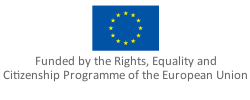
Microsite AWAY
Introduction
Juvenile justice systems in Europe have undergone considerable changes during the past 20 years, particularly in the former socialist countries of Central and Eastern Europe (CEE) region. These legal and structural changes concerned the implementation of alternative measures, diversion, victim-offender mediation and other restorative techniques in the majority of the countries in the CEE region.
Despite these positive movements, juvenile justice systems still have been characterized by a focus on punishment rather than rehabilitation, prosecution rather than diversion, and on detention rather than community alternatives. These practices often respond to public demands on reacting towards juvenile delinquency by more severe sanctioning. Even though the current legislation in the target CEE countries (Croatia, Bulgaria, Romania and Hungary) recognises restorative approaches such as mediation, as well as sentences of community service, in most cases, these are rarely imposed. Belgium is also a target country, where restorative approaches are recognised and best practice can be identified (and will be collected throughout the project) however the main actors are still reluctant to use the existing system of diversion/restorative justice and use instead deprivation of liberty as main measure.
In this context of improvement, amongst fluctuations and challenges, in diverting children in conflict with the law from imprisonment, the following determined challenge remains in the target CEE countries: diversion and alternatives to imprisonment are generally less accessible for children from rural areas and the poorest backgrounds. In this way, juvenile justice reforms are confined to the Capital City; data on juvenile sentencing practices in general, and diversion in particular, is not available, incomplete, and in most cases, inaccessible; there is little or no evidence of progress in continued use of services; limited availability of after-care services that support reintegration into society for children who have been in conflict with the law and juvenile justice professionals often do not use practices in the area of diversion due to lack of services and limited knowledge of child-friendly judicial practices.
It appears that while there are available services and opportunities for diversion, the current measures are not appropriate, effective, or even recorded as such, so while most legislation now recognises diversion, the recognition is characterised by narrow limits. It comes out that introducing diversion not only requires new legal and procedural frameworks but also a shift in the roles and aims of the juvenile justice systems.
In this regard, the project ‘AWAY - Alternative Ways to Address Youth’ (JUST/2015/RCHI/AG/PROF) seeks to promote the use of diversion in order to have, in practice, a child friendly approach to the juvenile justice system. To address the challenges in this area, this project will conduct research and develop an empirical evidence base on diversion that will inform the juvenile justice in the region, it will provide professional support to multidisciplinary professionals to become more aware and better equipped in using diversion mechanisms and finally, it will endeavour to enhance public awareness on the benefits of diversion for children.
